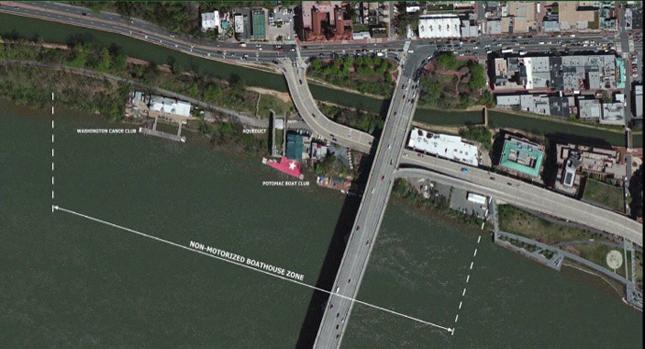Park Service Sets March 3 Meeting on Boathouse Study
By • June 12, 2013 0 1141

Another Georgetown issue is on the line to generate two sharply divided camps: Should we build another boathouse on the Potomac River? And how should we do it?
The National Park Service has scheduled a March 3 meeting to discuss its ongoing “Feasibility Study for a Non-Motorized Boathouse Zone along the Georgetown Waterfront.” The four-hour workshop seeks to gather public input and will likely begin Saturday morning, but a specific time and place has not yet been determined.
The announcement was sent by Tammy Stidham of the Park Service’s National Capital Region Tammy_Stidham@nps.gov or call 202 619 7474.
Here is where the Park Service stands on any new boathouse on the Potomac in Georgetown:
The boathouse zone was designated in the 1987 master plan for the Georgetown Waterfront Park, and now that the park has been completed below 34th Street the NPS is taking a step back to look holistically at potential uses and facilities for the zone. The study will be used to inform future decision-making processes.
The study is being conducted to identify feasible ways to enhance visitor access to the Potomac River with non-motorized boats, while finding a balance among different uses of the space. To do so, this study will:
?- Identify the range and quantity of uses and users that should be accommodated in the zone, consistent with physical site limitations and deemed necessary and appropriate uses for the site.
– Lay the groundwork for future decision-making for development and improvements and guide future planning and compliance requirements.
– Establish a programmatic approach to allowing access to the river for a variety of uses, not just non-motorized boat uses.
The project will consider:
– The waterfront land immediately upstream of the Georgetown Waterfront Park at 34th Street, to about 1,200 feet upstream of the Key Bridge, including federal properties north of Water Street/K Street.
– Existing facilities (Potomac Boat Club, Washington Canoe Club and Jack’s Boathouse), stakeholders and the immediate environs around the zone.
– Inclusion of new facilities within the zone.
– Cyclists, joggers, walkers and other users in and near the zone.
– Relationship with the Capital Crescent Trail.

